Mammoth Safaris – the rivers of Africa
by Gareth Hardres-Williams, 19th March 2018
Africa’s rivers are immortalised in texts and classic journeys, their flow is an enormous part of the story of Africa and its history. Today, these rivers are an integral part of the safari story of Africa as water remains the lifeblood of many of the safari hotspots. Here we will look at a few of Africa’s iconic rivers and how they continue to tell safari stories from the far north to the deep south of this vast continent…
The Nile River…
The longest river in the world – or is it? Until 2007, the Nile flowing from the mountains of Burundi and the Nyungwe Forest in Rwanda, through 11 countries, and spilling out into the Mediterranean via the famous delta in Egypt was considered to be the longest river in the world. In that year, a team (largely sponsored by the Brazilian government note) measured the Amazon to be longer. 4345 miles plays 4258 miles. It appears as if the jury remains out on this one, but there is no doubt that the Nile is the longest river in Africa and that it passes through and finds source in some incredible Mammoth Safaris destinations, including Tanzania, Uganda, Rwanda, the Democratic Republic of the Congo, Kenya and Ethiopia. The river that is considered by many to begin in Burundi and Rwanda – areas that feed Lake Victoria – also passes through Eritrea, South Sudan, Republic of the Sudan, and of course culminates in Egypt.
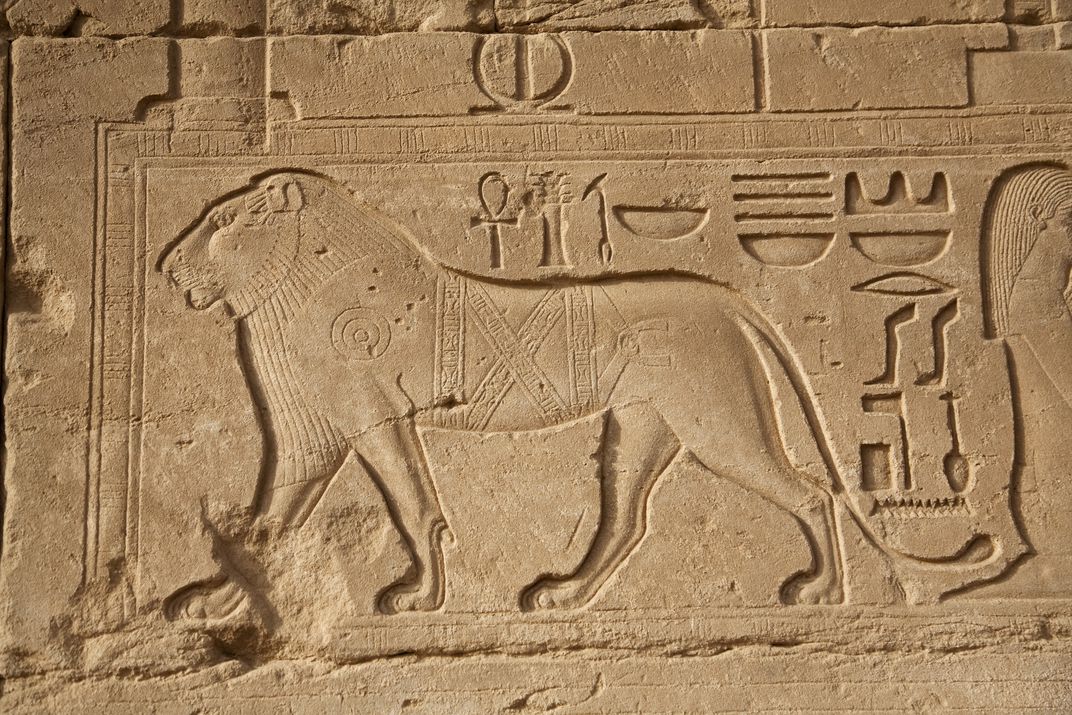
The temples and relics of Egypt offer incredible insights into the natural history of this part of Africa, with animals including this lion immortalised in stone. The Egyptian civilisation is inextricably linked to the Nile River, with most of these historical sights close to the river
Image credit: Smithsonian (Niels van Gijn/JAI/Corbis)
The search for the source of the Nile River…
According to NASA and the ASTER science team, here is what we know about the source of the Nile… “Two major tributaries feed the Nile – the Blue Nile, which delivers more water, and the White Nile, which reaches deeper into the heart of Africa. Since Europeans began exploring Africa, controversy has dogged the hunt for the remotest source of the Nile. Beginning in the mid-1800s, Lake Victoria was largely accepted as the source of the White Nile. But generations of explorers continued to push deeper into the heart of Africa to discover tributaries of Lake Victoria that would qualify as the Nile’s “true” source. The cartographers at National Geographic Society have generally accepted two sources, one in Rwanda and one in Burundi, but the search and the controversy has continued right up to the present. In March 2006, a trio of explorers announced they had followed the Nile to its remotest point using Global Positioning System (GPS) devices, and that the river originated in a muddy pool deep in the nearly impenetrable Nyungwe Forest in Rwanda.”
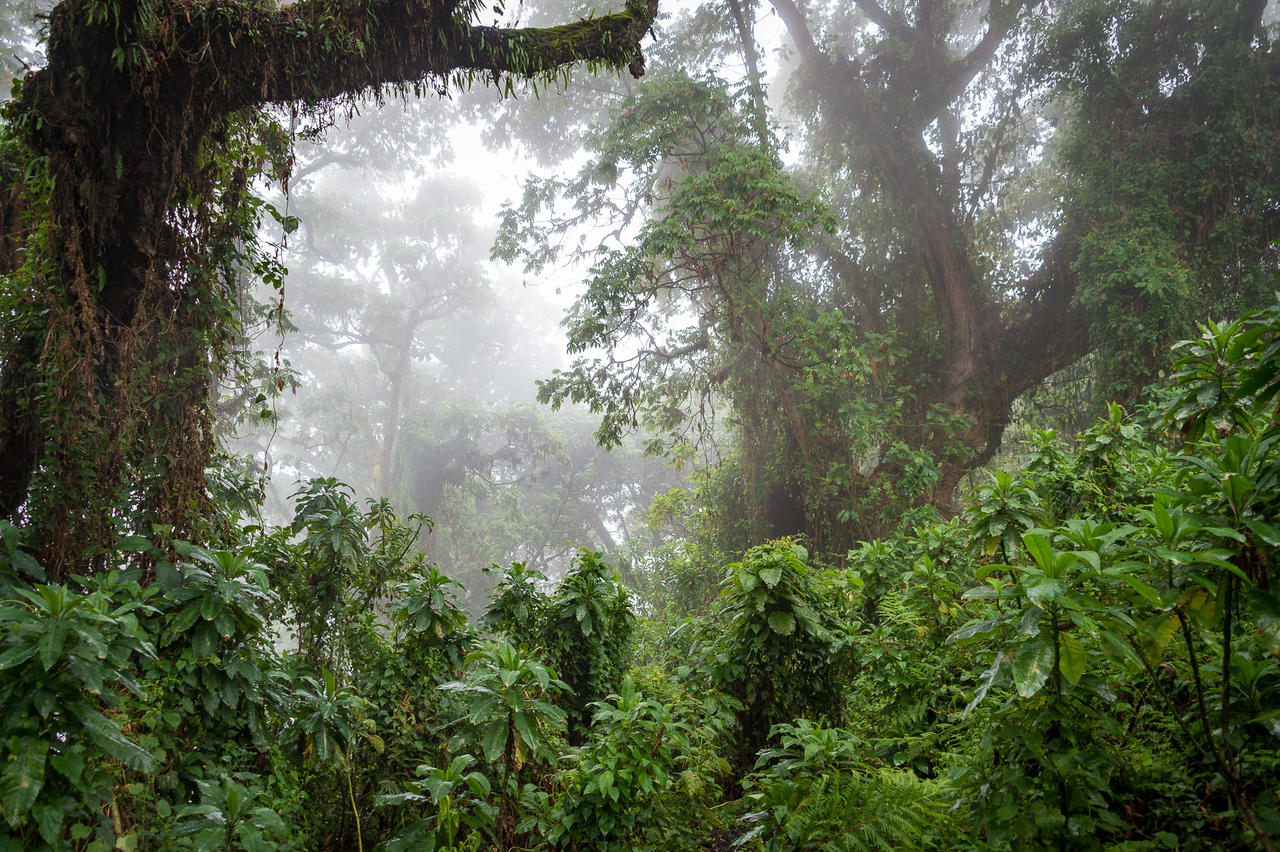
The incredible Rwandan rainforests are considered to feed the Nile River
Thus, one Nile River safari destination we can highly recommend is the home to that puddle and source of the Nile, the Nyungwe Forest in the South West of Rwanda.
The Nyungwe Forest offers the safari-goer a tremendously wide diversity of animal species, making it a priority for conservation in Africa, and a must for the professional and amateur naturalist alike. The forest provides a great span of microhabitats which cater for many different species of plants and animals.
The Nyungwe Forest Park contains a quarter of all of Africa’s primate species – 13 in total, an impressive 275 bird species, over a thousand plant species, 75 mammal species, 32 amphibian and 38 reptile species. Many of these animals are restricted-range species that are only found in the Albertine Rift Montane Forests ecoregion in Africa, and endemism is rife here. The Nyungwe Forest, which reaches its maximum altitude of 3000 meters above sea level, is of particular interest for the presence of colonies of Chimpanzees and Angola Colobus.
Covering over 1000 square kilometres, Nyungwe is surely one of the world’s most beautiful and pristine mountain rainforests. It’s believed to be one of Africa’s oldest forests, staying green even through the Ice Age, which explains its diversity.
This majestic rainforest is filled with nature and wildlife experiences for you to emerge yourself in. Hiking or even biking the beautiful terrain, tracking the famous chimpanzees, experiencing the canopy walk, witnessing beautiful birds, relaxing by waterfalls are just a glimpse of activities that Nyungwe offers.
Sounds and views collaborate to create a one-of-a-kind wildlife experience. Exploring through the forest, travellers will witness the lush green mountains and cooling mist in a landscape that won’t be soon forgotten.
Cultural activities are also available to explore and enjoy around the forest.
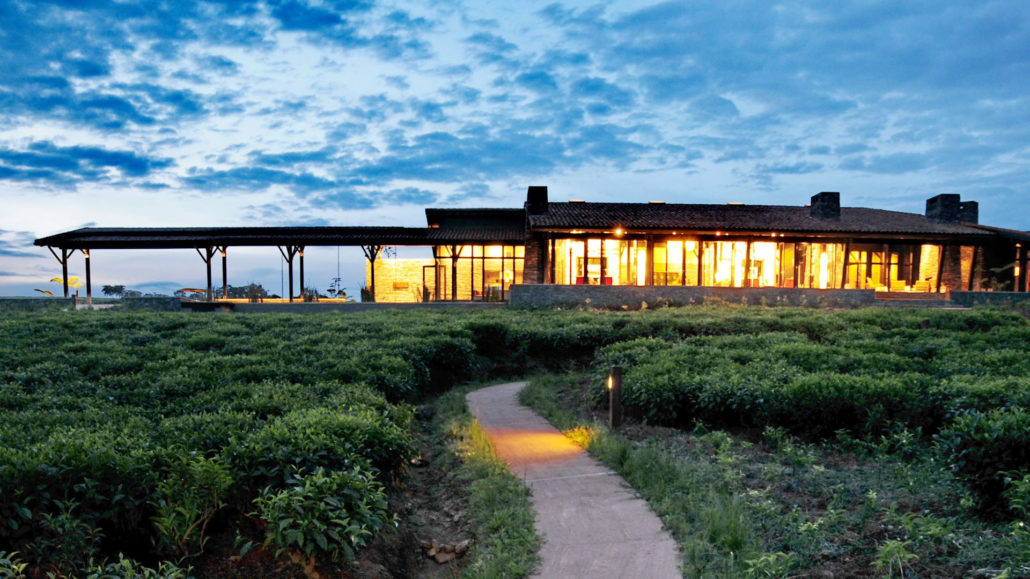
The spectacular One & Only Nyungwe House (formerly Nyungwe Forest Lodge) in Rwanda in the forest that forms part of the source area of the river Nile
Image credit: Wetu Travel Technologies
Another Nile River safari destination we can highly recommend is a visit to the Wild Frontiers Baker’s Lodge on the banks of the Victoria Nile in Uganda.
During your safari whilst based at Baker’s Lodge you will be taken on game drives in the stunning Murchison Falls National Park. It is the river-based activities here though that really make the experience memorable. These include a boat cruise up the Nile River to the foot of the Murchison Falls. The immense force of the water and the views of these falls are awe inspiring from the close-up viewing points. One can also travel by boat to the delta and return to Paraa with a game drive through the game-rich Buligi area. There is also the option to leave your boat in the Fajao Gorge and to climb to the top of the falls to enjoy the incredible view down into the thunderous chasm, before returning to the lodge by vehicle. All these activities can be arranged using one of many boats from the lodge’s fleet. Baker’s Lodge is also a great base for those keen on fishing for Nile Perch, operating a strict catch and release policy.
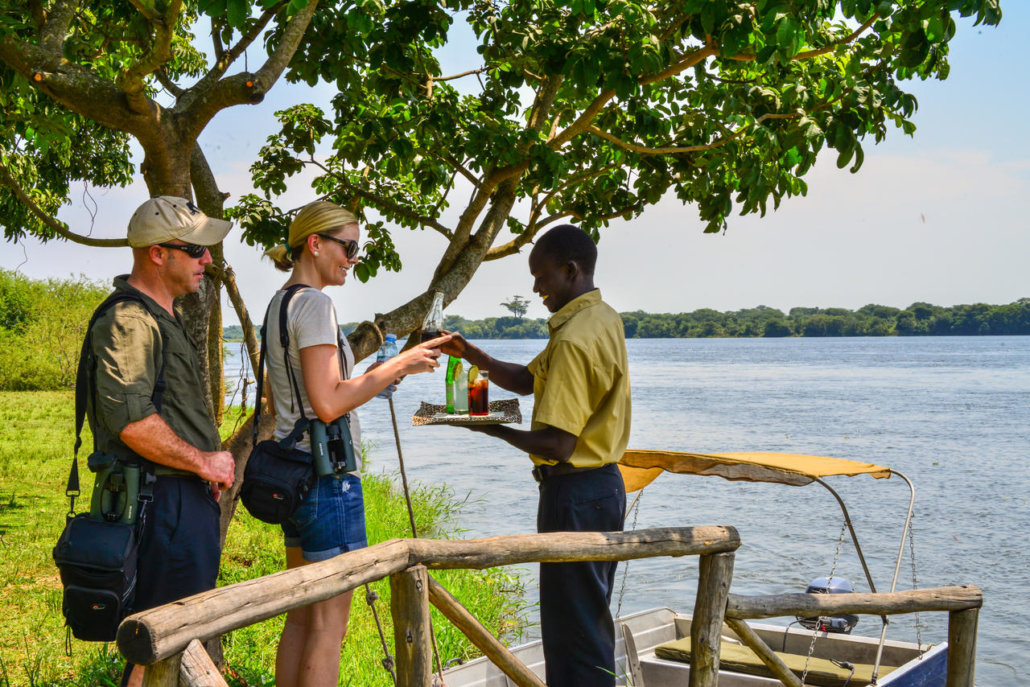
Gavin and Katlyn enjoying a drink on the southern bank of the mighty Nile River that transects Murchison Falls National Park. The intimate and upmarket Wild Frontiers Baker’s Safari Lodge is set on the water’s edge overlooks a clearing, large shady trees and wetland areas abundant in bird life and an ideal place to find an illusive Shoebill. The MFNP is a wonderful destination – enjoy the falls on the Victoria Nile and some decent game viewing here too
Image credit: Wild Frontiers Baker’s Lodge
The Congo River…
The Congo River is the deepest river in the world and is a major transport route in Central and West Africa. Much of our thinking around this river and what it represents has been formed around the early 20th century literary work by Joseph Conrad, “The Heart of Darkness”, which painted a rather foreboding picture of the river. Lake Kivu and the Ruzizi River that lie between the Democratic Republic of Congo and Rwanda are broadly considered to form part of the Upper Congo system (even though they feed Lake Tanganiyka to the south). Interestingly Lake Kivu is a potentially volatile lake, running the risk of undergoing a “limnic erruption” also known as “lake overturn” when gas suddenly erupts from deep waters. In the case of Lake Kivu, methane and carbon dioxide are the two troublemakers generated by underwater volcanic activity and should levels reach a critical mass of saturation, the gas could burst forth with disastrous consequences. Thankfully, mitigation is taking place through the use of methane for power generation with a secondary degassing of carbon dioxide as a result.
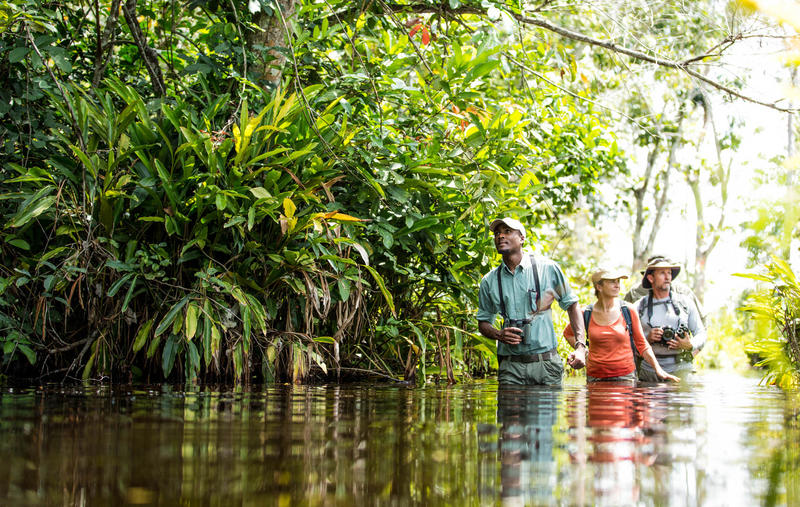
No better way to get to grips with the rivers of Africa than to get into them! Nestled into the South Central section of the Republic of Congo’s Odzala-Kokoua National Park is Lango Camp. This camp gives guests the opportunity to explore the rainforest in quiet seclusion
Image credit: Lango Camp (Wetu Travel Technologies)
A quick tributary off the main stream – the capital of the Congo…
Brazzaville is the capital city of the Congo. Brazzaville is also the name that is sometimes twinned with Congo to provide another name for the country – Congo-Brazzaville, otherwise know as the Republic of Congo. Different of course to the Democratic Republic of the Congo – a much larger country to the South of Congo, whose capital is Kinshasa. Now that we have cleared that up be sure to remember that Brazzaville in the Congo is on the northern banks of the Congo – the Congo River that is – clear as mud?
A Congo-Brazzaville safari is a part fly-in, part drive-in safari that offers so much not available outside of the forested Central African countries. The main attraction in this part of untamed Africa is the endangered Lowland Gorilla as well as the Forest Elephant and Forest Buffalo. There are many other interesting primates and fantastic birds to be discovered on snaking trails that wind through the forest. Also expect rare treats like a view of the secretive Bongo antelope. This safari is an African rainforest immersion which until recently was available only to hardy, intrepid researchers! An element of luxury has been brought into a truly remote location, making this one place not to be missed.
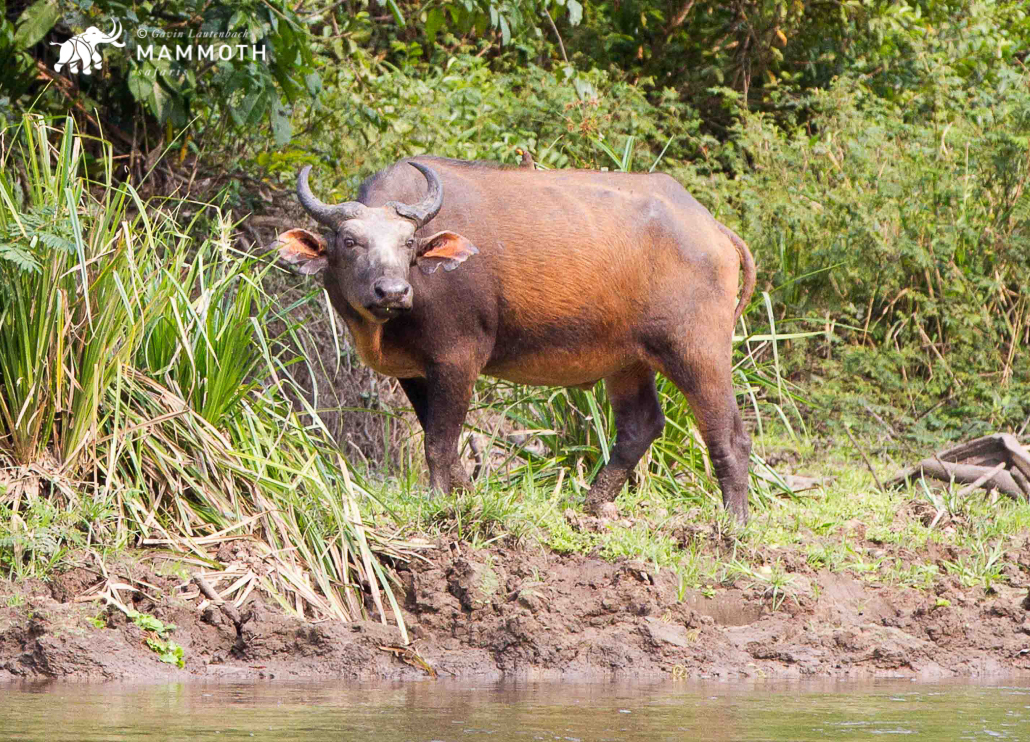
The Forest Buffalo on the banks of a river in Odzala-Kokoua National Park in the northwest of the Congo. This national park established by the French in 1935 is dedicated to conserving part of the second largest expanse of tropical rainforest in the world
Image credit: Gavin Lautenbach
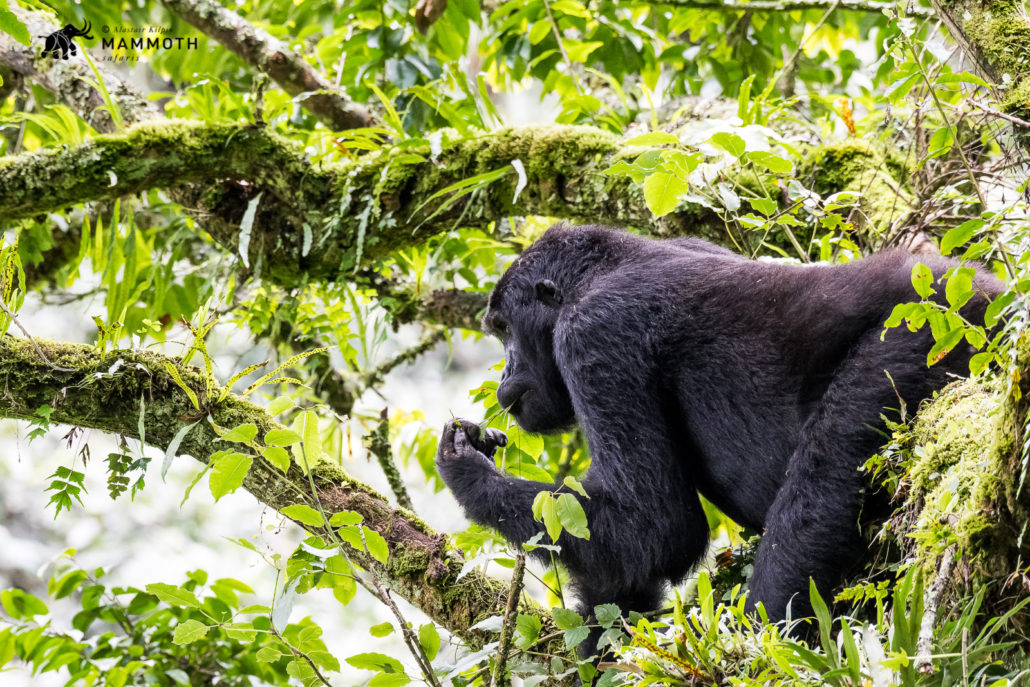
The Kahuzi-Beiga National Park in the Democratic Republic of the Congo also falls in the Congo basin and is home to the Eastern Lowland or Grauer’s Gorilla – the world’s largest Gorilla species
The Okavango River…
The Okavango River forms the inland delta in Botswana that is home to some of the most productive game viewing areas on the continent and indeed the planet. The seasonal verdant oasis that is “the delta” is renowned for exceptional game viewing. In fact, such is the impact of this river on the world of safari, that it gets its very own blog here. Not enough can be said about the incredible safari options on offer courtesy of the Okavango River. One such game viewing Mecca in the delta, Mombo Camp in the Moremi Game Reserve, is for very good reason referred to as “the place of plenty”. Before the Okavango River makes its way into Botswana to create this safari sensation, it descends through a series of rapids, down 4 meters known as the Popa Falls. Every wet season, the high levels of rain in Angola swell the river and send floods into the delta, turning desert in a seasonal wetland. The rains take quite some time to reach Botswana and typically arrive in the dry season from June.
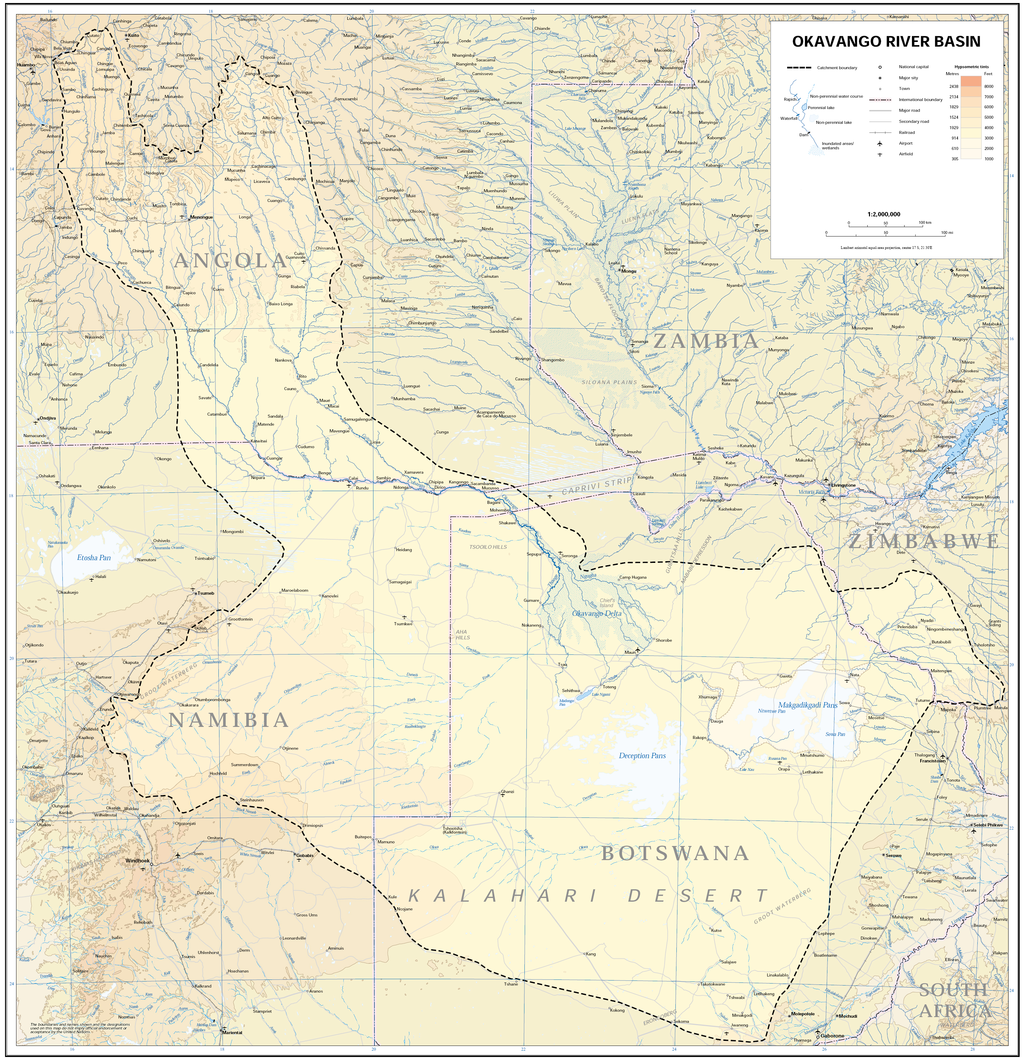
The above map outlines the Okavango River Basin and clearly depicts “the river that dies in the desert”. Interestingly, during colder periods in the earth’s history, the Okavango River would have been a tributary that fed the then massive Lake Makgadikgadi – now part of the Kalahari desert
Image credit: United Nations
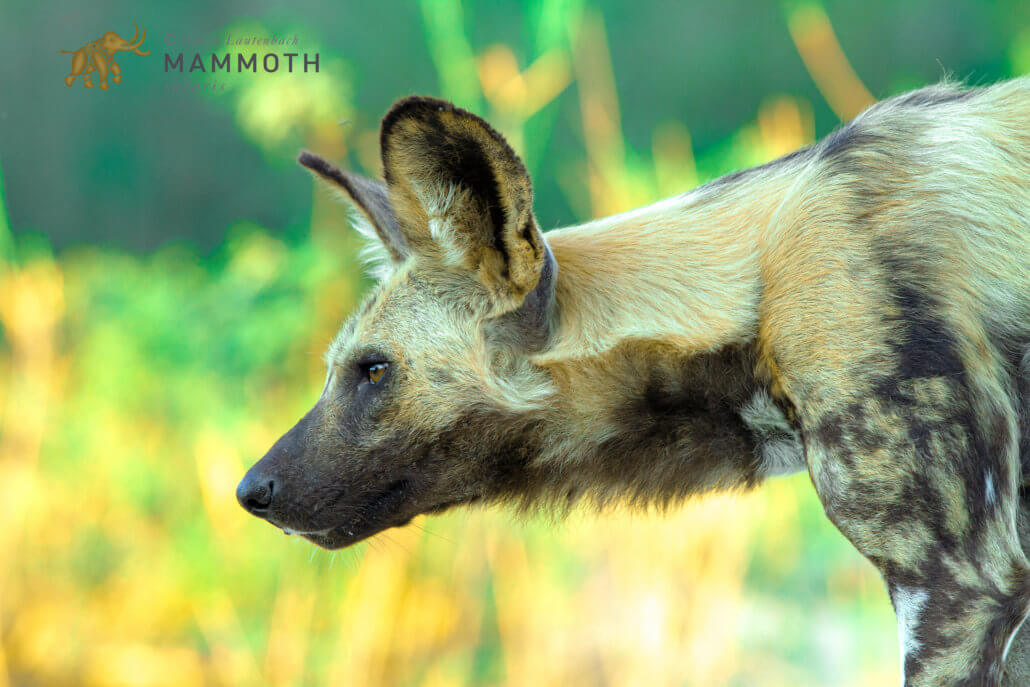
One of the many predators that call the Okavango Delta home – the African Wild Dog viewing can be exceptional here
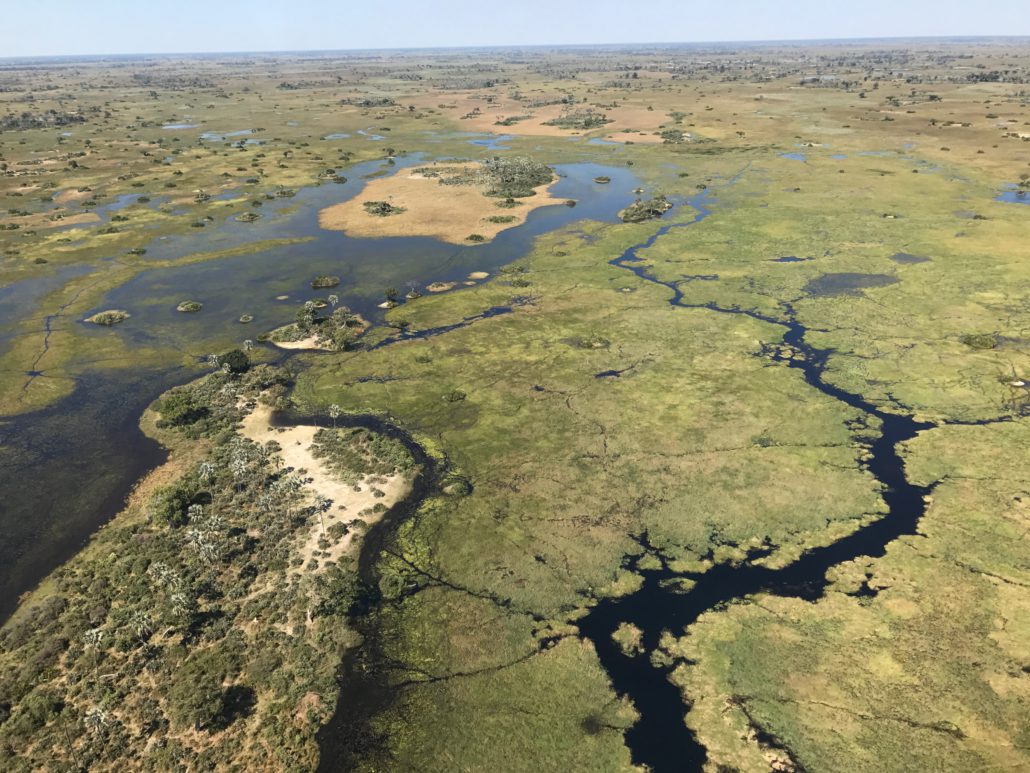
The watery wonderland that provides the wildlife with an oasis of a refuge. This is a classic view of the Okavango Delta once the flood waters of the Okavango River have travelled all the way from Angola. The reduced gradient forces the water to spread out as the flow slows and it is in this semi-aquatic theatre that safari drama unfolds. Botswana and the Okavango Delta are absolute must destinations for the safari enthusiast
Image credit: &Beyond
The Zambezi River…
This is the 4th largest river in Africa and the largest to terminate in the Indian Ocean. By far the most famous “event” that this river is responsible for however, happens far from the Indian ocean between Zambia and Zimbabwe – the Victoria Falls. The spectacle that is the Victoria Falls certainly is one of the finest African experiences. “Mosi-oa-tunya” is the local name for the falls and is loosely translated to “the smoke that thunders”, and thunder the smoke certainly does as the water plummets 100 meters over the falls.
There are very good hotel-style places within walking distance, allowing you to experience the sight and sound of the falls at different times of day and night. The white-water rafting and scenic flights are also based in the towns of Livingstone and Victoria Falls. Alternatively, the excellent safari-style camps that are found less than 30 minutes drive upstream allow one to escape the tourist huddle and enjoy the more serene Zambezi River and different activities. Toka Leya in Zambia is one such safari option just 20 minutes upstream from the falls, on the banks of the Zambezi. The Royal Livingstone Hotel is one of the classic hotel options in Zambia, with views of the falls from the rolling lawns and terraces. A wonderful bonus as a guest of this hotel is the private access (and complimentary) to the Victoria Falls via the hotel’s own access point – that is just how close one is to the action of the falls.
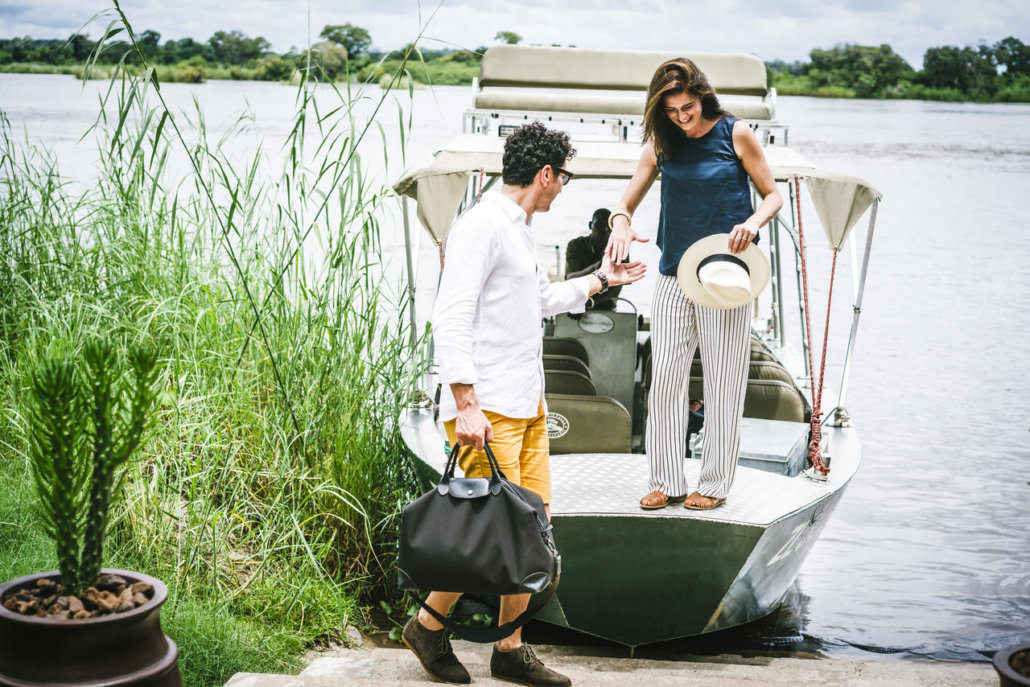
Getting around to some of the lodges on the banks of the Zambezi requires the use of a water taxi. This is the case at the Royal Livingstone Hotel in Zambia
Image credit: The Royal Livingstone Hotel
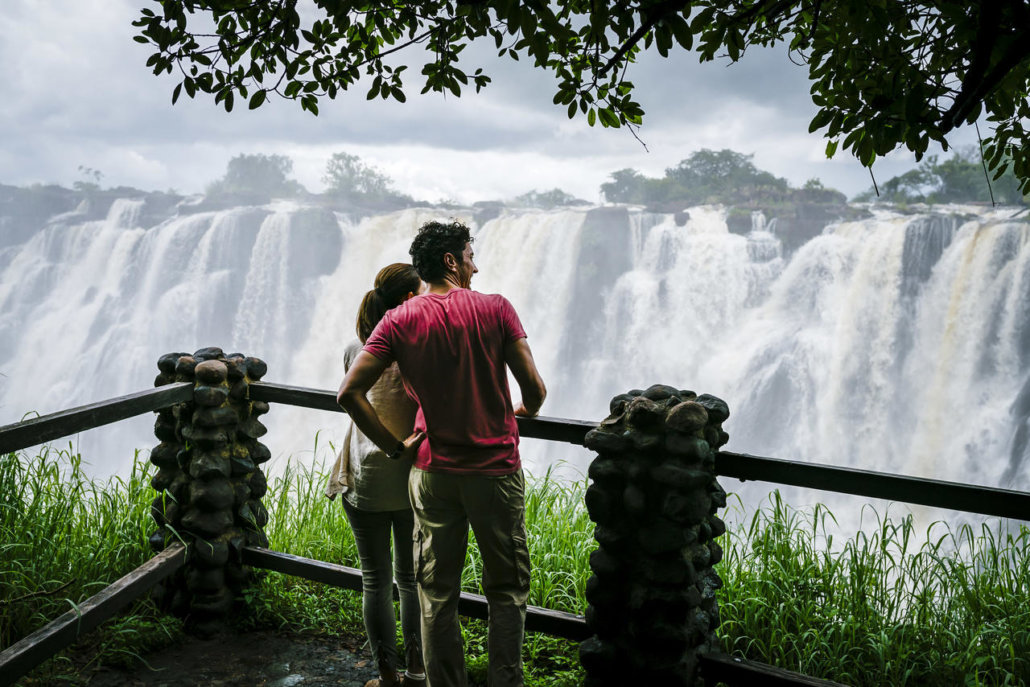
Views of the wonderful falls are best enjoyed when the waters subside a little, otherwise one can tend to have a largely vapour-obscured view. Another benefit of viewing the falls outside of the wet period, is that your game viewing options are much improved in the drier winter months, both in Zimbabwe and neighbouring Botswana. Should you want to twin a visit to the Victoria Falls with some exceptional game viewing in the Okavango Delta, then target June through to September
Image credit: The Royal Livingstone Hotel
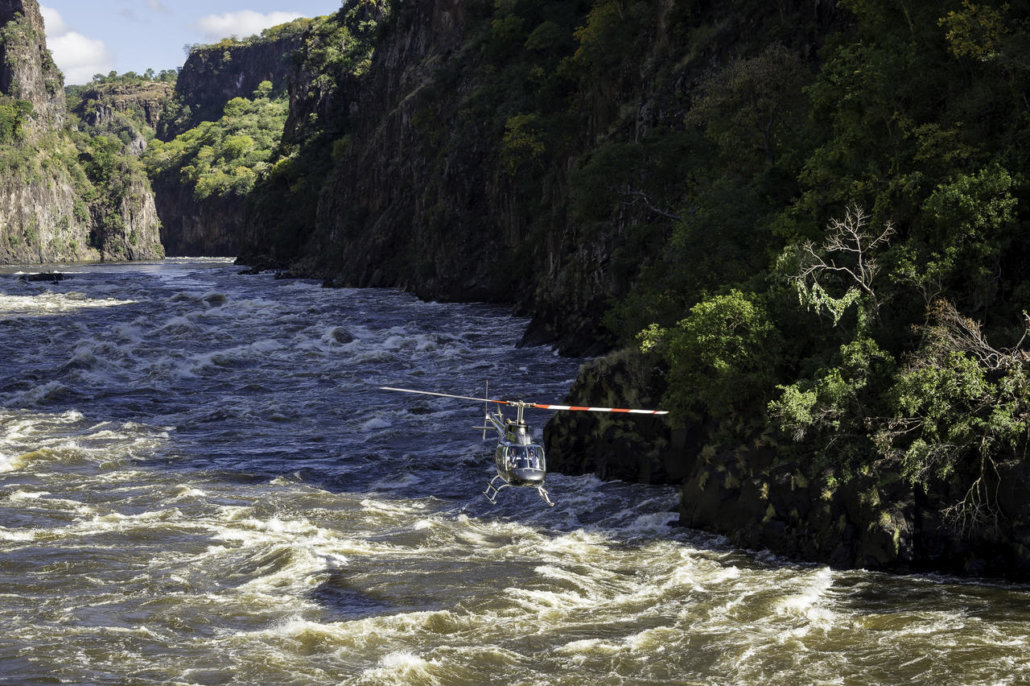
A helicopter trip along the river to the tumbling waters of the Victoria Falls is another awesome activity offered thanks to the spectacular Zambezi river
Image credit: The Royal Livingstone Hotel
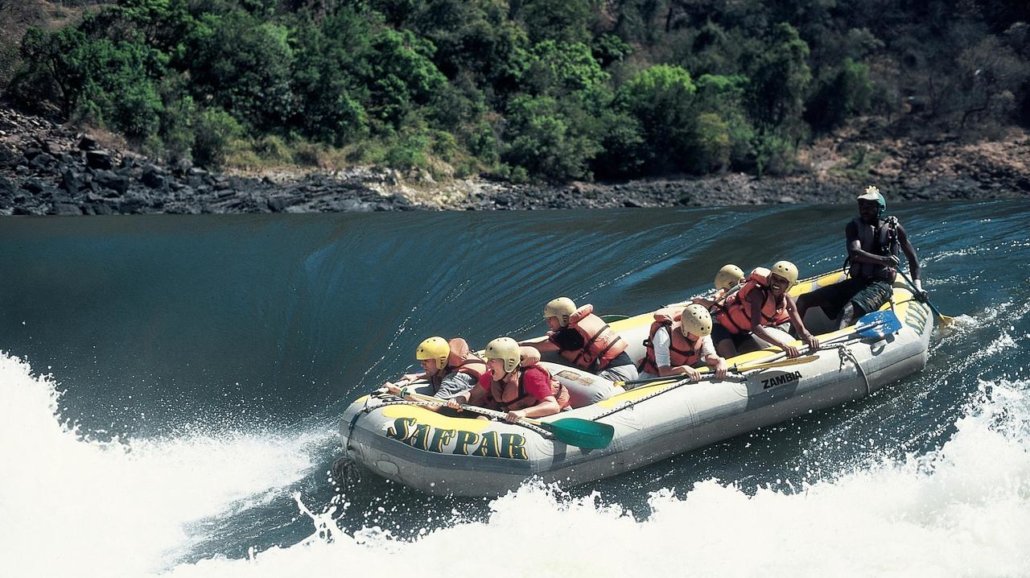
White-water rafting on the Zambezi is a supremely exhilarating experience that can be enjoyed on the raging rapids of the river. The August – December low water season is regarded by many as the best time to enjoy this thrilling adventure, with the rafting activity sometimes closing when the river is a raging torrent between April and May
Image credit: The Royal Livingstone Hotel
How to make this journey of a lifetime a reality…
For more information on how to book your Mammoth Safaris adventure to search for wilderness, wildlife and experiencing the ebbs and flows of Africa’s great rivers, please contact a member of our sales team via email at info@mammothsafaris.com and visit www.mammothsafaris.com for more destinations and journeys.

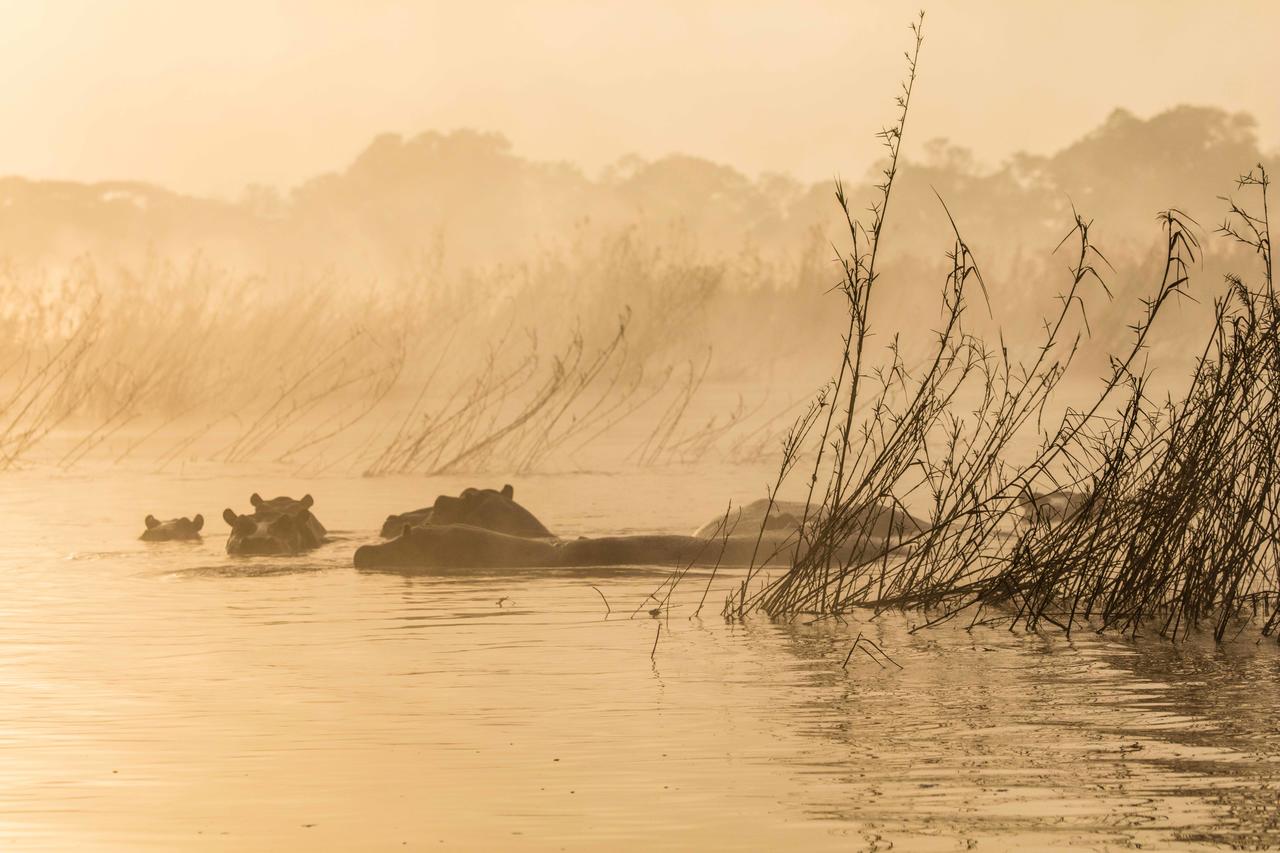


Leave a Reply
Want to join the discussion?Feel free to contribute!